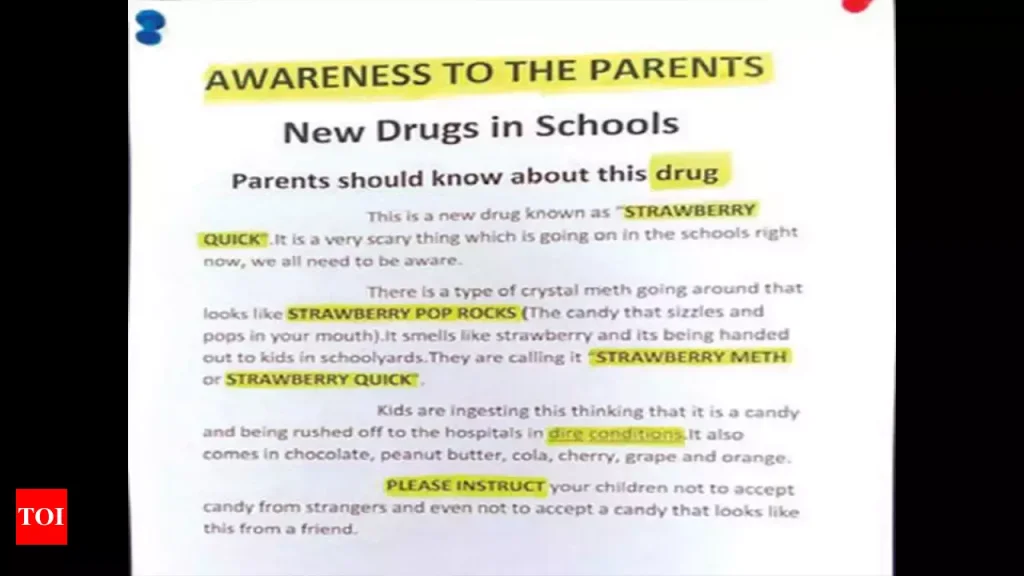A 10-year-old girl in Seguin, Texas, was arrested after bringing a small bag of cocaine to school and hiding it in a desk. The incident took place at Jefferson Elementary School and led to an immediate police response. The student was taken into custody and later transferred to a juvenile detention center on serious drug charges.
The situation came to light when another student at Jefferson Elementary found a suspicious bag of white powder inside a desk. Concerned about its presence, the student immediately reported it to school authorities.
The school resource officer on duty responded swiftly and confiscated the bag. Upon further investigation, it was confirmed that the substance was cocaine hydrochloride, a potent stimulant classified under Penalty Group 1 in Texas drug laws.
Once the authorities identified the student responsible for bringing the drugs to school, they placed the fifth-grade girl under arrest. She was then transported to the Guadalupe County Juvenile Probation Department.
Following the incident, the principal of Jefferson Elementary School issued an official statement to parents and guardians of students. The statement read, “Today, a student discovered a small quantity of a controlled substance, later identified as cocaine, inside a desk. A thorough investigation was conducted, and appropriate disciplinary actions have been taken per school policy and the law.”
The 10-year-old now faces serious charges under Texas law for possession of a controlled substance in a drug-free zone. Schools are designated as drug-free zones, meaning penalties for drug possession are more severe when an offense occurs on school grounds.
Due to her young age, the case will be handled through the juvenile justice system, which may focus on rehabilitation rather than strict punishment. However, the incident raises serious concerns about how such a young child had access to illegal drugs.
Cocaine hydrochloride is the salt form of cocaine, making it highly addictive due to its strong effects on the brain’s dopamine and serotonin systems. When consumed, it creates a feeling of euphoria, increased alertness, and a temporary energy boost. However, it is also extremely dangerous, leading to addiction and dependence, heart problems, strokes, and severe withdrawal symptoms. According to the National Library of Medicine, cocaine hydrochloride blocks nerve impulses and can cause a loss of sensation, making it especially risky.
Authorities have not yet disclosed how the young girl obtained cocaine. Some possible concerns include access at home, where she might have found the drugs in her household, influence from older individuals who may have given her the substance outside of school, or accidental possession, where she may not have realized what it was.
The Guadalupe County Sheriff’s Office and local authorities are continuing their investigation to determine if there is a larger issue at play.
This shocking case has sparked serious concerns among parents and educators in Seguin, Texas. Many are now asking how schools can prevent drug-related incidents involving children, whether students are receiving enough drug education at a young age, and what resources are available for children who may be exposed to drugs. Schools and law enforcement officials are expected to increase awareness campaigns and enhance security measures to prevent future incidents.
This case serves as a wake-up call for parents, educators, and law enforcement to address the dangers of drug exposure at an early age. While the juvenile justice system will determine the appropriate course of action for the young girl, it is crucial to identify the root cause and prevent future occurrences in Texas schools.
Disclaimer – Our editorial team has thoroughly fact-checked this article to ensure its accuracy and eliminate any potential misinformation. We are dedicated to upholding the highest standards of integrity in our content.





More Stories
Young Student’s Arrest Raises Questions About Drug Access and School Safety
Young Student’s Arrest Raises Questions About Drug Access and School Safety
Young Student’s Arrest Raises Questions About Drug Access and School Safety